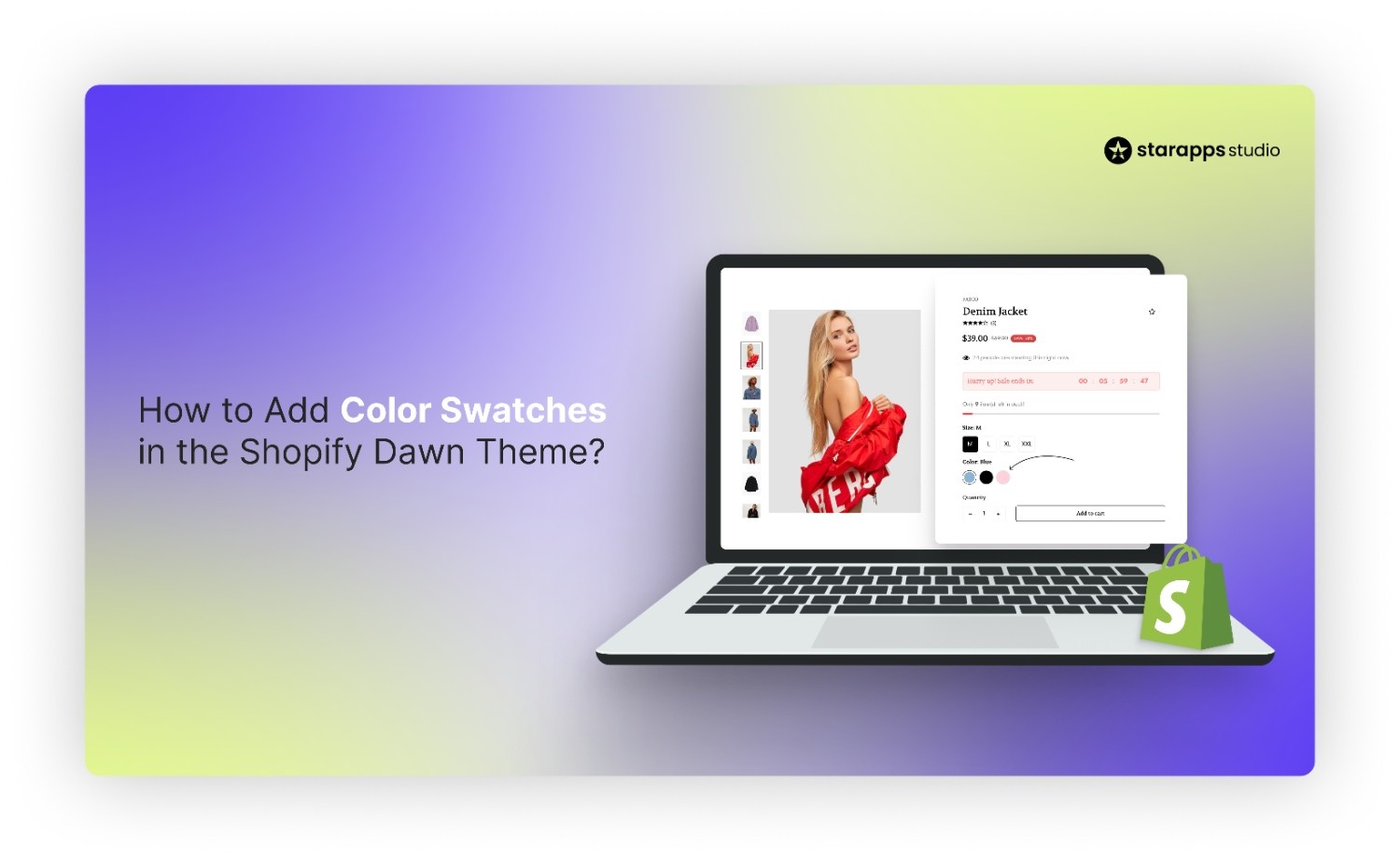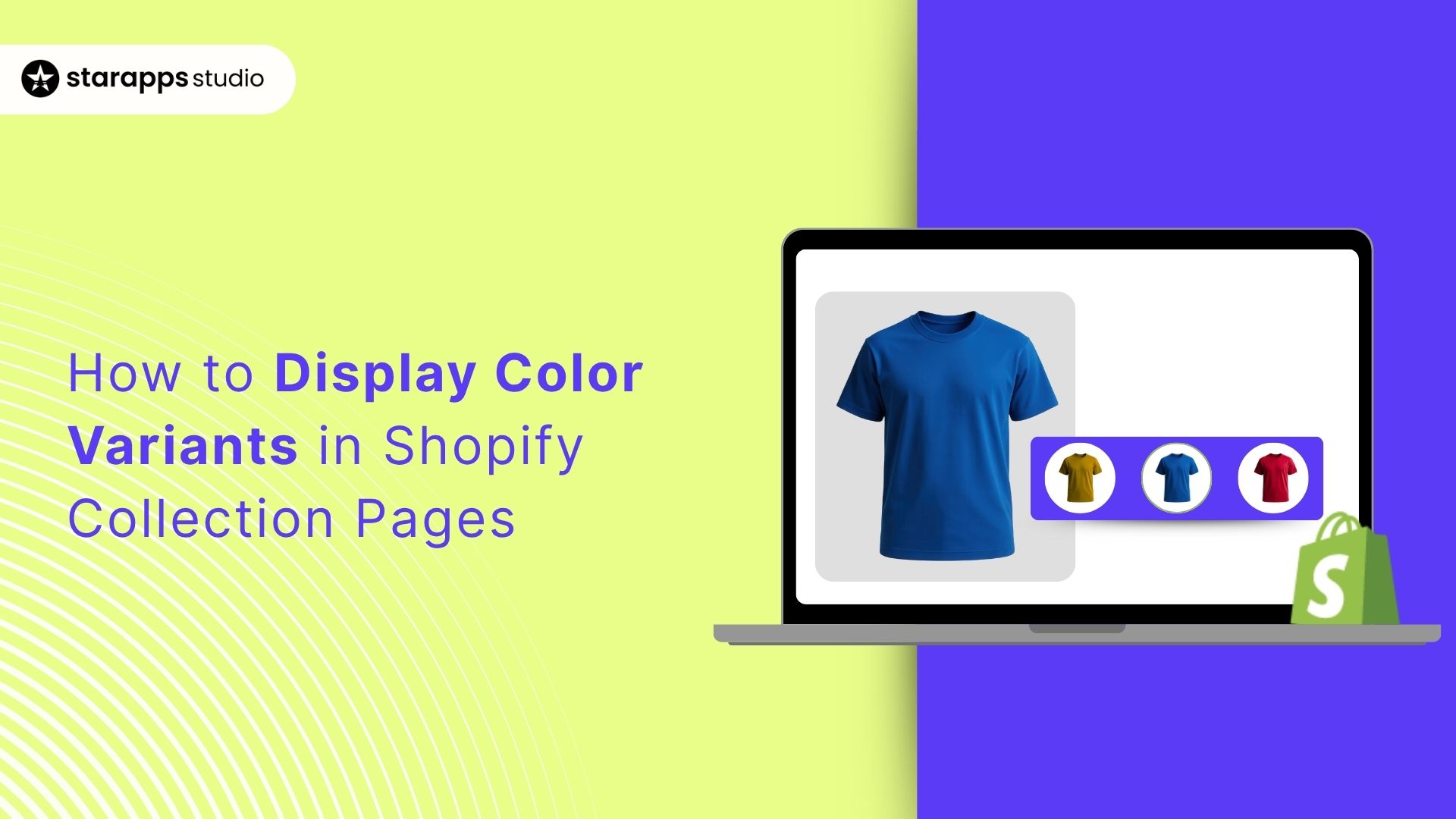
Navigate Shopify's variant limit with top apps, expert tips, and case studies. Discover methods to unlock more options for your products. Click to enhance your store now!
As your product range grows, so does the complexity of how it’s presented to customers. For many Shopify merchants, the Shopify variant limit of 100 variants and a 3-option limit per product quickly becomes a constraint, especially for businesses offering multiple sizes, colors, or custom features. This limitation can lead to cluttered workarounds, poor user experience, and missed sales opportunities.
A case in point is Incu, a fashion retailer that saw a 15% increase in conversion rate and a 26% rise in revenue after optimizing how product options were displayed. Their improvements weren’t about expanding inventory but about presenting it more effectively.
In this blog, we’ll examine practical ways to overcome Shopify’s variant restrictions. From using specialized apps to implementing thoughtful design and structural changes, we’ll cover proven solutions that improve both your product pages and your store’s overall performance.
What is the Shopify Variant Limit?
The Shopify variant limit refers to the platform’s built-in restriction that allows a maximum of 100 variants per product and only 3 product options (such as size, color, or material). A variant is defined as a unique combination of these options.
For example, if you offer a shirt with 5 sizes, 4 colors, and 3 sleeve lengths, you’re already managing 60 unique variants. Introducing just one additional option, such as fabric type or fit, can quickly bring you to Shopify’s 100-variant limit, leaving little room for further flexibility.
This limit is particularly frustrating for merchants with:
- Custom-built products
- Products with many materials or styles
- Personalized or made-to-order inventory
Why It’s a Problem
- Poor UX: Customers may be forced to browse multiple listings for the same item, each with a subset of variants.
- SEO Issues: Duplicate content across similar product pages can hurt search rankings.
- Operational Overhead: Managing inventory across duplicate SKUs becomes messy and error-prone.
While the 100-variant limit can initially seem manageable, it quickly becomes a barrier as your product offerings expand. If you’re looking for a detailed explanation on how to tackle Shopify’s variant limit and possible solutions, check out this insightful video that walks you through overcoming this limitation.
Video: Shopify Variant Limit 99 - SOLVED (Shopify Advanced)
Let’s now explore the hidden costs and challenges that come with hitting Shopify's variant ceiling, and how they can affect your store’s performance.
The Hidden Costs of Hitting the Variant Ceiling
Reaching the Shopify variant limit presents more than just logistical challenges—it can directly impact conversion rates, site performance, and customer confidence. When your store is forced to split a single product across multiple listings or rely on less intuitive configurations, the overall shopping experience suffers.
Key Drawbacks
- Disjointed Navigation: Separating one product into several listings leads to a fragmented user journey, making it harder for customers to find what they want.
- Inventory Management Issues: Tracking stock across duplicate products increases the risk of overselling or mismatched availability.
- Delayed Purchase Decisions: Excessive dropdowns or unclear option labels can overwhelm customers, leading to decision fatigue and cart abandonment.
Shopify’s own user experience research highlights that stores with well-structured, consolidated product pages tend to perform better in terms of customer engagement, time spent on site, and checkout completion rates.
Effective Workarounds for Managing Shopify’s Variant Limit
While Shopify’s default limitations may seem restrictive, many successful merchants have implemented practical solutions that extend product flexibility without needing to change platforms. These approaches help maintain a smooth user experience and keep backend operations manageable. Below are some of the most widely used and effective ways to manage the Shopify variant limit.
1. Use Metafields
Metafields allow you to store and display additional product information that goes beyond Shopify’s default variant structure. This solution is particularly useful for customizations that don’t directly impact inventory, thus helping you stay within the Shopify variant limit.
Use Case:
If you sell personalized items, such as jewelry or gifts, you can add a text field for engraving messages. Since this data is stored as a line item property and not as a variant, it won’t count toward the 100-variant limit. Customers still get a tailored experience without adding inventory complexity.
2. Custom Product Pages
For stores with development resources or access to a page builder, designing custom product pages can be a powerful alternative. Using Shopify Liquid code or drag-and-drop tools, you can create layouts that support complex configurations without relying on variants.
Use Case:
A furniture store might use dropdown menus, radio buttons, or swatches to allow customers to select dimensions, fabric, and finishes, while storing those inputs as properties on the cart item. This offers the same flexibility as variants, but with full control over the design and logic.
3. Linked Product Listings
When a product has too many variations to fit under one listing, some merchants split it into multiple standalone listings and link them together using tags, collections, or direct URLs.
Use Case:
A store offering a dress in 10 colors and multiple sizes may create a separate product page for each color and guide customers between them with “Available in other colors” links. While this isn’t ideal for SEO and can create some user friction, it serves as a quick workaround for stores needing to push more options live quickly.
These strategies help you work within Shopify’s framework while still providing the flexibility your products and customers demand. If you’re looking for a more visual walkthrough on how to implement these solutions effectively, check out the following video for a step-by-step guide.
Video: Overcome Shopify Variant Limitations by Using Metafields
Code-Based Customizations for Developers
For merchants with access to a development team or agency, custom coding opens the door to a far more tailored and scalable product experience. While Shopify apps offer quick solutions, code-based approaches provide deeper control over how options are displayed, how data is captured, and how the storefront behaves in response to customer interactions.
What You Can Do with Custom Code
1. Use Line Item Properties
Line item properties are custom fields added to the product form that pass additional information to the cart and order, but don't count as variants. They’re ideal for capturing details like engraving text, gift messages, or product personalization without increasing your variant count.
Example: A customer selects “Add engraving” and enters a custom name, and this detail is carried into the checkout process without requiring a new variant in your product data.
2. Build Conditional Logic for Dynamic Options
With Shopify’s Liquid templating language and JavaScript, you can build logic that dynamically shows or hides product options based on previous selections.
Example: If a customer selects a product in “Blue,” your code can automatically filter and show only the sizes available in that color, reducing visual clutter and guiding the customer through the buying process.
3. Implement Custom Forms
Developers can design product pages with fully custom forms, allowing more complex interactions like step-by-step product builders, multi-stage configurators, or product bundles—features that most off-the-shelf apps cannot replicate with the same level of precision.
Example: A furniture store allows customers to build a sofa by selecting fabric, cushion type, leg style, and add-ons, all within a single page, while storing their selections in the cart using structured line item properties.
When to Consider Shopify Plus or Headless Commerce
Some merchants may outgrow even the best app-based workarounds. In that case, it might be time to upgrade.
Shopify Plus
- Access to Shopify Scripts and advanced product logic.
- Integrate with enterprise ERPs or PIMs.
- Ideal for stores with thousands of SKUs and global customer bases.
Headless Shopify
- Complete control over the frontend.
- Connect Shopify as a backend with custom frontend built on React, Vue, or Next.js.
- Ideal for tech-savvy teams who want performance and flexibility.
Tips to Prevent Hitting the Limit in the First Place
For many merchants, especially those just beginning to scale, planning ahead can help maintain flexibility, reduce complexity, and preserve a cleaner customer experience. Sometimes, the best solution is proactive planning. Here’s how to minimize the risk of running into Shopify’s variant wall:
Smart Grouping
- Instead of offering "red, blue, green, yellow, and teal," offer "warm tones" and "cool tones."
- Combine low-selling variants into bundles.
Simplify Options
- Use clear naming conventions to reduce confusion.
- Use visual swatches for faster scanning.
How StarApps Studio Helps You Bypass Shopify’s Variant Limit
When you hit Shopify’s variant limit, your ability to offer a diverse range of product options without overwhelming your customers can be severely restricted. Fortunately, StarApps Studio provides a suite of tools that help merchants bypass this limit, enabling a more flexible, intuitive, and engaging shopping experience without exceeding Shopify’s built-in constraints.
1. Swatch King: Visualize Product Options
Swatch King lets you display product variants as color swatches or images, removing the need to add every option as a variant. This improves navigation, reduces confusion, and enhances conversion rates.
2. Variant Image Automator: Simplify Image Management
Variant Image Automator automatically shows the correct image based on the selected variant, keeping product pages clean and reducing the need for separate images for each variant.
3. SA Variants: Combined Listings: Show All Variants on Collection Pages
SA Variants: Combined Listings lets you split product variants and display them individually on collection pages. Each variant can have its own title, images, URL, and description, helping customers find the right version faster. This improves product discovery, supports SEO, and enhances filtering across your storefront.
By using these apps, StarApps Studio helps merchants overcome Shopify’s variant limit in a way that improves both operational efficiency and the customer shopping experience. Instead of relying on fragmented product listings or complex workarounds, these solutions streamline variant management, allowing you to focus on offering the best possible product selection without limitations.
Conclusion
Reaching the Shopify variant limit doesn’t have to be a setback for your business. As many merchants face this challenge while scaling, there are proven solutions to help you overcome it without compromising your store’s performance. Whether you’re looking for easy-to-implement apps, custom coding options, or smarter product structuring, the right tools can enable your store to grow seamlessly.
StarApps Studio offers a suite of powerful apps designed to solve the variant problem and improve your store’s overall functionality. From Swatch King for better product display, to Variant Title King and Variant Descriptions King for more dynamic options, these tools help you bypass Shopify’s limitations while enhancing user experience and increasing conversions.
Don’t let variant limits restrict your growth—take control with StarApps Studio’s solutions, designed to streamline your product options and boost your store’s performance.
Ready to scale without hitting the variant ceiling? Explore the full suite of StarApps Studio apps and start optimizing your Shopify store today.
Heading
End-to-end traceability
To ensure regulatory compliance, you must have a complete overview of your products from production to shipping. Book a demo to see how Katana can give you full visibility of your operations.





.png)
.png)